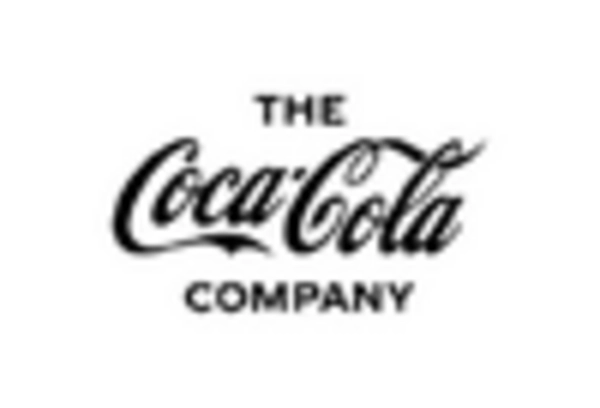Health Consciousness
The increasing awareness of health and wellness among consumers appears to be a pivotal driver in the Food and Beverages Market. As individuals become more informed about nutrition and the impact of food on health, there is a noticeable shift towards healthier options. This trend is reflected in the rising demand for organic, low-calorie, and functional foods. According to recent data, the market for organic food has seen a growth rate of approximately 10 percent annually, indicating a robust consumer preference for health-oriented products. This shift not only influences purchasing decisions but also compels manufacturers to innovate and reformulate products to meet these evolving consumer expectations. Consequently, the Food and Beverages Market is increasingly characterized by a diverse array of health-focused offerings, catering to a demographic that prioritizes well-being.
Sustainability Initiatives
Sustainability has emerged as a critical driver within the Food and Beverages Market, as consumers increasingly demand environmentally friendly practices. This trend encompasses a wide range of initiatives, from sustainable sourcing of ingredients to eco-friendly packaging solutions. Recent statistics suggest that nearly 70 percent of consumers are willing to pay more for products that are sustainably sourced. This growing preference is prompting companies to adopt transparent supply chains and invest in sustainable practices, which not only appeal to environmentally conscious consumers but also enhance brand loyalty. Furthermore, the Food and Beverages Market is witnessing a surge in plant-based alternatives, reflecting a broader commitment to reducing carbon footprints. As sustainability becomes a core value for many brands, it is likely to shape the future landscape of the industry.
Technological Advancements
Technological advancements are significantly transforming the Food and Beverages Market, particularly in production, distribution, and consumer engagement. Innovations such as artificial intelligence and blockchain technology are streamlining supply chains and enhancing food safety. For instance, AI-driven analytics are enabling companies to predict consumer trends and optimize inventory management, thereby reducing waste. Additionally, the rise of e-commerce platforms has revolutionized how consumers access food and beverage products, with online grocery sales projected to reach over 20 percent of total grocery sales in the coming years. This shift towards digital channels is not only convenient for consumers but also allows brands to engage with their audience more effectively. As technology continues to evolve, its integration into the Food and Beverages Market is expected to drive efficiency and enhance customer experiences.
Convenience and On-the-Go Options
The demand for convenience is a prominent driver in the Food and Beverages Market, as consumers increasingly seek quick and easy meal solutions. Busy lifestyles and changing work patterns have led to a surge in the popularity of ready-to-eat meals, snacks, and beverages that require minimal preparation. Recent data indicates that the market for convenience foods is expected to grow at a compound annual growth rate of around 5 percent over the next few years. This trend is prompting manufacturers to innovate and expand their product lines to include healthier, portable options that cater to on-the-go consumers. As a result, the Food and Beverages Market is witnessing a proliferation of products designed for convenience, reflecting the evolving needs of modern consumers.
Cultural Diversity and Global Flavors
The increasing appreciation for cultural diversity and The Food and Beverages Industry. Consumers are becoming more adventurous in their culinary choices, seeking out authentic international cuisines and unique flavor profiles. This trend is evident in the rising popularity of ethnic foods, which have seen a substantial increase in market share over the past few years. For example, the demand for Asian and Latin American cuisines has surged, reflecting a broader interest in diverse culinary experiences. This cultural exploration is not only influencing restaurant menus but also retail offerings, as brands introduce products that cater to these evolving tastes. Consequently, the Food and Beverages Market is becoming more inclusive, with a wider array of products that celebrate global culinary traditions.

















Leave a Comment